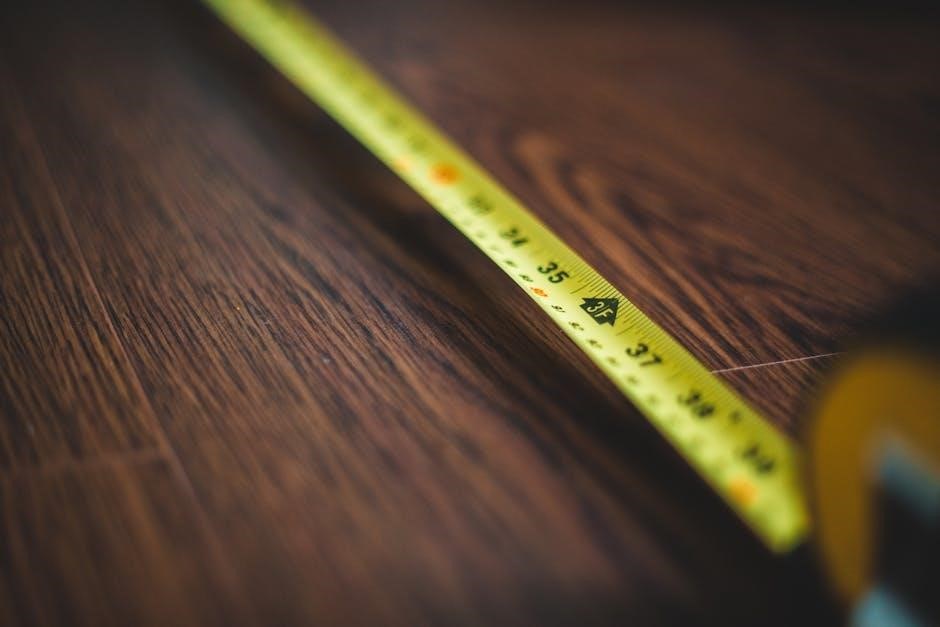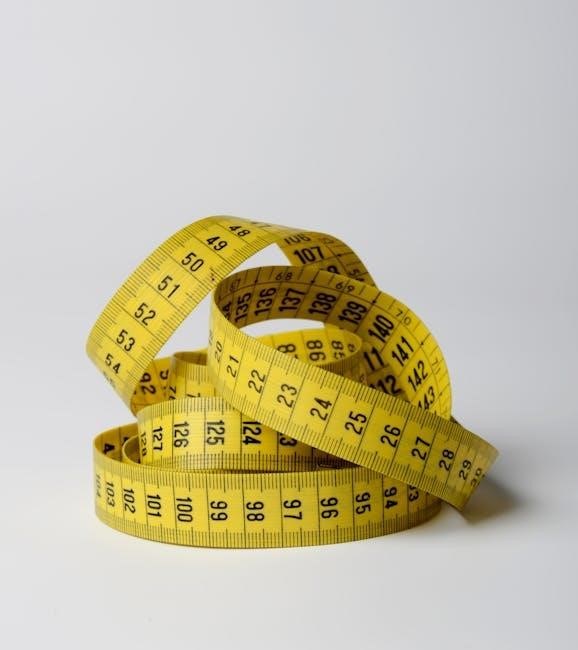Proper snowboard measurements are crucial for optimal performance and comfort. Guides like Burton’s and evo’s resources help riders understand key components such as length, width, and fit. Measuring accurately ensures the right size, enhancing stability and control for all experience levels.
Importance of Proper Snowboard Sizing
Proper snowboard sizing is essential for maximizing performance, comfort, and safety on the slopes. A board that is too long or too short can hinder control and stability, making it difficult to maneuver. Similarly, incorrect width may lead to poor edge performance or boot drag. Proper sizing ensures optimal balance, turning efficiency, and responsiveness. It also reduces fatigue and enhances the overall riding experience. By selecting the right size, riders can enjoy better precision and confidence, whether carving groomers or navigating challenging terrain. Accurate measurements are key to unlocking your full potential on the mountain.
Key Measurements to Consider
When selecting a snowboard, it’s essential to focus on length, width, effective edge, and waist width. These measurements directly impact performance, stability, and control. Length affects turning radius and float, while width ensures proper boot fit and edge engagement. Effective edge influences edge hold and responsiveness, and waist width determines how easily the board can carve or float in powder; Understanding these dimensions helps riders match their board to their riding style, weight, and boot size for an optimal on-snow experience. Accurate measurements ensure the best fit and performance.

Understanding Snowboard Length
Snowboard length is determined by your height and weight, impacting turning ease and stability. Proper sizing ensures optimal performance for your riding style;

How Height and Weight Influence Length
Your height and weight are key factors in determining the ideal snowboard length. A general rule is to choose a board that reaches between your chin and the top of your head when stood upright. Lighter riders may prefer a slightly shorter board for easier maneuverability, while heavier riders benefit from a longer board for added stability. For example, a rider standing 5’8″ and weighing 150 lbs might opt for a 148cm board, whereas a 200lb rider of the same height might choose a 154cm; Proper sizing ensures better control and prevents issues such as sinking in powder or lack of maneuverability.
Recommended Length Based on Riding Style
Your riding style significantly influences the ideal snowboard length. Freestyle riders often prefer shorter boards (140-145cm) for agility and trick performance. All-mountain riders benefit from medium lengths (145-155cm) for versatility across various terrain. Powder enthusiasts typically opt for longer boards (155-160cm) to stay afloat in deep snow. Aggressive carvers may prefer even longer boards (160+cm) for stability at high speeds. Always consider your riding style alongside height and weight for the best fit, ensuring optimal performance and enjoyment on the slopes.

Snowboard Width and Boot Compatibility
Proper snowboard width ensures compatibility with your boots, enhancing stability and control. A wider board accommodates larger boots, while narrower boards suit smaller sizes, optimizing performance and comfort for all riders.
Why Width Matters for Stability and Control
Snowboard width is crucial for stability and control, as it directly impacts how the board interacts with the snow. A board that is too narrow may cause boot drag, reducing precision, while a board that is too wide can feel cumbersome. Proper width ensures your boots align with the board’s edges, allowing smooth turns and consistent performance. Narrower boards excel in icy conditions, while wider boards perform better in deep snow. Matching the board’s width to your boot size and riding style ensures optimal responsiveness and control, enhancing your overall snowboarding experience.
Matching Boot Size to Snowboard Width
Ensuring your boot size aligns with your snowboard’s width is essential for optimal performance. Boots that are too large for the board can cause toe and heel drag, limiting edge control, while smaller boots on a wide board may not engage the edges properly. Proper fit prevents “boot-out” scenarios, where boots hang over the edges, reducing responsiveness. A snug match between boot size and board width enhances stability, allowing precise turns and better overall control, making it critical to measure and align these dimensions accurately for the best riding experience.

Effective Edge and Waist Width
The effective edge is the snowboard’s edge in contact with the snow, crucial for stability and control. Waist width measures the board’s narrowest point, affecting float in powder and turns.
What is Effective Edge and Why It Matters
The effective edge refers to the portion of the snowboard’s edge that makes contact with the snow. It plays a critical role in stability, edge hold, and control, especially during turns. A longer effective edge generally offers better performance on groomed trails, while a shorter edge can improve maneuverability in deeper snow. Properly understanding and selecting the right effective edge ensures optimal grip and responsiveness, making it a key factor in choosing the right snowboard for your riding style and terrain preferences. It directly impacts how the board interacts with the snow, affecting overall performance and rider confidence.
Waist Width and Its Impact on Performance
Waist width is the narrowest measurement of the snowboard, typically measured at the center. It significantly influences how the board interacts with the snow. A narrower waist width improves edge-to-edge responsiveness, ideal for carving and precise turns, while a wider waist width enhances float in deep snow and stability at high speeds. Proper waist width ensures compatibility with boot size and riding style, preventing toe drag and improving overall control. It’s a critical factor in achieving the perfect balance between performance and comfort for any snowboarding experience.

Sidecut Radius and Flex Rating
Sidecut radius determines how easily the snowboard turns, with smaller radii enabling tighter turns. Flex rating indicates stiffness, affecting responsiveness and comfort for different riding styles.
How Sidecut Radius Affects Turning
The sidecut radius significantly impacts a snowboard’s turning ability. A smaller radius allows for tighter, more agile turns, making it ideal for freestyle or tight tree runs. Conversely, a larger radius enhances stability at high speeds and is better suited for carving or racing. The radius determines how easily the board initiates turns and maintains control, directly influencing the riding experience. Riders should choose a radius that aligns with their preferred terrain and style to maximize performance and enjoyment on the slopes.
Understanding Flex Rating for Different Riders
Flex rating indicates a snowboard’s stiffness, ranging from soft (1-2) to stiff (9-10). Softer boards are ideal for beginners and freestyle riding, offering easier maneuverability and forgiveness. Medium flex (5-7) suits all-mountain riders, balancing responsiveness and adaptability. Stiffer boards (8-10) are best for advanced riders and high-speed carving, providing precision and edge hold. Choosing the right flex ensures optimal performance, comfort, and control, tailoring the board to the rider’s skill level and preferred terrain. Proper flex pairing enhances the overall snowboarding experience.

Tips for Measuring Your Snowboard
Use size charts and online tools for accuracy. Measure height, weight, and boot size to ensure proper fit. Check guides like Burton’s for precise sizing recommendations always.

How to Measure Your Height and Weight Accurately
To measure your height accurately, stand barefoot with your back against a wall, feet shoulder-width apart, and head level. Use a tape measure or ruler to mark the wall at the top of your head. For weight, use a digital scale in the morning before eating, wearing minimal clothing. Ensure the scale is on a flat, hard surface for precise measurement. Accurate height and weight are crucial for determining the right snowboard size, ensuring optimal performance and comfort. Always double-check measurements and consult size charts for consistency.

Using Size Charts and Online Tools for Accuracy
Size charts and online tools are essential for precise snowboard sizing. Enter accurate height, weight, and boot size into calculators like Burton’s or evo’s guides. These tools analyze data to recommend ideal dimensions. Cross-referencing multiple sources ensures consistency. Online platforms often include user reviews and expert tips, providing additional insights. By leveraging these resources, riders can confidently select a snowboard that matches their needs, enhancing performance and comfort on the slopes. Always verify measurements across different brands for the best fit.

Common Mistakes to Avoid
Common errors include ignoring boot compatibility and riding style. Ensuring proper fit and alignment is crucial for performance and comfort. Avoid these pitfalls for better results;
Overlooking Boot and Binding Compatibility
Ignoring boot and binding compatibility is a common mistake that can lead to poor performance and discomfort. Ensure your boots fit snugly into bindings for optimal control and responsiveness. Proper alignment and size matching are essential to avoid issues like uneven pressure or restricted movement. Always check compatibility before purchasing, as mismatched setups can hinder your riding experience. Using a size chart or expert advice can help you make the right choice, ensuring a seamless fit and better performance on the snow.
Choosing the Wrong Size for Your Riding Style
Selecting a snowboard size that doesn’t match your riding style can significantly impact performance. For example, a board too short for all-mountain riding may lack stability at high speeds, while a board too long for freestyle can be difficult to maneuver. Ensure your choice aligns with your primary riding style, whether it’s powder, freeride, or park riding. Using size charts and expert recommendations can help you avoid this common mistake and ensure your snowboard performs as intended for your specific needs.
Proper snowboard measurements are crucial for performance and comfort. Key factors like length, width, and flex ensure the best fit. Use this guide to make informed decisions.
Proper snowboard measurements are essential for optimal performance and comfort. Key factors include length, width, and effective edge, which impact stability and control. Riders should consider their height, weight, and boot size when selecting a snowboard. Additionally, sidecut radius and flex rating must align with their riding style. Always measure accurately and use size charts for the best fit. Avoid common mistakes like ignoring boot-binding compatibility or choosing the wrong size for your style; By prioritizing these elements, riders can ensure a superior on-snow experience.
Next Steps in Choosing Your Snowboard
After understanding snowboard measurements, visit a local shop to try boards that match your size and style. Use online tools like Burton’s or evo’s size guides for accuracy. Consider renting a snowboard to test different models before buying. Compare features like flex rating and sidecut radius to suit your riding preferences. Lastly, ensure your boots and bindings are compatible with the board for optimal performance. Taking these steps will help you find the perfect snowboard for an enjoyable experience on the slopes.





